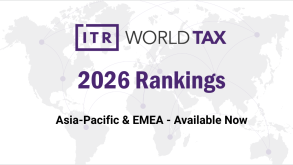Following the work of the OECD/G20 Inclusive Framework on BEPS in actions 8–10, and Egypt’s membership of the Inclusive Framework, the Egyptian tax authorities have dedicated much of their recent attention to building capacity in transfer pricing, resulting in an overhaul of the Egyptian transfer pricing regime and legislative framework.
The transfer pricing landscape in Egypt has changed quickly in the past few years and tremendous developments have taken place in the audit environment, including a noticeable change in the nature of transfer pricing inquiries and issues challenged by the tax authorities, mirroring the overall upskilling of transfer pricing capabilities.
Given the significant developments, transfer pricing risk assessment has gained more importance on the tax authorities’ side, and has been the foundation of critical decisions pertaining to the commencement of tax and transfer pricing audits.
This article discusses the importance of transfer pricing risk assessment for companies, while part two addresses the key considerations to be aware of to be prepared for transfer pricing inquiries and audits from the tax authorities.
The pathways of a transfer pricing audit in Egypt
Typically, within the Egyptian Tax Authority, a transfer pricing audit could take place:
As part of the corporate income tax audit; or
On a standalone basis, regardless of whether the corporate income tax audit has commenced.
If undertaken as part of the corporate income tax audit, it is likely that the corporate income tax auditor will make the relevant enquiries following high-level risk assessment criteria. If certain risks are identified in that assessment, the auditor will refer the case to the transfer pricing unit, which will assess potential adjustments to be taken into consideration with the overall audit results.
Alternatively, in the latter case when a standalone transfer pricing audit takes place, it will always be the outcome of a detailed transfer pricing risk assessment process in which high transfer pricing risks are identified that require the commencement of a transfer pricing audit.
With the automation process currently happening at an Egyptian Tax Authority-wide level and encompassing all business processes, including submissions and audits, a risk assessment module has been built into the tax authority’s systems, according to which, transfer pricing risk assessments will be conducted for file selection. The module will essentially consider risk assessment criteria similar to those currently looked into ahead of audits.
The weight of transfer pricing risk assessment from the tax authorities’ perspective
From a tax authority’s perspective, a thorough transfer pricing audit can require the dedication of considerable resources, which in many cases are seen as scarce due to the limited number of specialised transfer pricing auditors. The audit process typically involves the review of large amounts of information, which in most cases will require the full attention of a number of auditors, conducting a number of meetings, the review of numerous documents and records, site visits if relevant, the analysis of financial and economic data, research and review of benchmarking information in databases, a serious effort to understand the taxpayer’s business and how that business generates profit, and discussion and negotiation with the taxpayer.
In short, commencing a thorough transfer pricing audit is a serious commitment for a tax administration. Accordingly, transfer pricing risk assessments are highly rated by tax authorities to ensure resources are being efficiently utilised.
Risk assessment criteria: transfer pricing risks typically looked into by the tax authorities
Transfer pricing risk generally arises from one of the following factors:
Risk arising from recurring transactions;
Large or complex one-off transactions;
Data revealed from country-by-country (CbC) reports – this is particularly relevant to Egyptian-parented groups as their CbC reports are readily accessible to the tax authorities, with no need for exchange of information; or
A company’s behaviours towards governance, and its ability to adhere to the compliance requirements.
The above broad factors translate to a number of specific practical risks, such as the following:
Significant or increasing transactions involving payments to related parties in low-tax jurisdictions or tax havens, which, from a tax authority’s perspective, may suggest a risk of transfer mispricing.
Material transactions constituting a large portion of the company’s revenues or costs, depending on the nature of the transaction. Examples include companies selling huge volumes of products or services to related parties that contribute a significant portion of the company’s total revenues.
Profitability trends – the level of profitability of a company could be compared to industry norms or comparable companies by the tax authorities. Where CbC reports are accessible, the profitability of local entities as opposed to wider group performance may be assessed. When a large deviation is found, this may be a strong indicator of a high transfer pricing risk. Likewise, an inconsistent profitability trend and/or consistent losses over a number of years raises another risk flag.
Excessive debt that exceeds the amount which a company could borrow if it were an independent entity, or excessive interest expenses may be an indicator of a transfer pricing risk. Excessive interest payments to non-residents are of particular concern for many countries.
Transfer pricing policies involving significant year-end adjustments, particularly those involving true-down adjustments at a local entity level.
Business restructurings, as these may involve internal reallocation of functions, assets or risks among the group. Transactions resulting from restructurings, such as transfers of intangibles to related parties, and the associated transfer pricing implications are typically prioritised by tax authorities, as these arrangements will typically have consequences for years to come.
Development, enhancement, maintenance, protection, and exploitation (DEMPE) functions-related risks, such as the case of a resident entity owning intangible property but attracting a low or no royalty, or the presence of arrangements involving payments for intangibles.
The quality of the contemporaneous transfer pricing documentation, and here two factors should be considered:
The quality of the business’s processes and documentation; and
The commercial outcomes of related-party dealings.
For example, a business that is consistently in a loss-making position and has a low quality of documentation is at the highest risk of a transfer pricing audit.
The documentation package essentially encompasses corporate tax return disclosures, master file and local file documentation, and the CbC reporting package (where applicable), together with supporting documentation such as related-party agreements. Specifically, the lack of related-party agreements or the misalignment of those with the actual conduct of the transaction, and the overall documentation flow, is another risk area.
Click here to read part two, which explains the key considerations for companies, and how transfer pricing healthchecks can help companies to mitigate risk.











